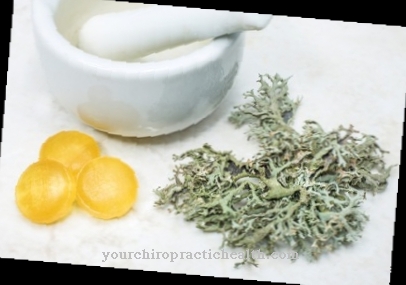Eliminating some ailments requires the use of various drugs and active ingredients. These do not necessarily have to come from the pharmaceutical industry. For example, the Ash a useful alternative to conventional medicine.
Occurrence & cultivation of the ash

In the Ash it is a tree. With a height of around 40 meters, it is one of the largest trees in Europe. In less optimal conditions, however, the ash usually only reaches 15 to 20 meters. The ash appears in most stands on the side of beeches. It increases its occurrence on more humid and rather dry soils, because the beech can have less influence on the growth of the ash. Ash trees live to be around 250 to 300 years old undisturbed.
The plant is native to Western Europe. It can partly be localized in Scandinavia. The population has been decreasing for years due to a hose fungus. At the same time, the ash is felled for its wood. This has very flexible properties and is widely used. The trunk is usually straight in shape with no bifurcations. The appearance of the bark and wood depends on the age of the tree. Younger plants look green and shiny, while the bark changes and becomes more robust after around 15 to 40 years.
A 90 year old ash tree can be expected to have a root system around 350 centimeters wide and 150 centimeters long. The leaves of the ash are green. The fruits of the tree grow on thin stems. They reach full ripeness in autumn, between October and November. Once they break away from the branches, they can be approximately 60 meters from their starting point. In some cases the helicopter was observed to overcome distances of up to 125 meters.
Effect & application
The medical application of the ash is only on the folk medical level. So far, the effectiveness has not been sufficiently investigated and proven by studies. However, tests have shown that the ingredients primarily have analgesic and anti-inflammatory properties. Due to a lack of evidence, Commission E rated the effectiveness as negative. However, empirical medicine does not feel such a classification is justified.
In general, the ash is said to be helpful for a variety of complaints. Their healing power is enhanced by a combination of other preparations. The ash helps with both internal and external complaints. Although the medicinal plant is usually not prescribed by doctors, there is usually nothing against its medicinal use. The ingredients of the ash are decisive for the effect of the ash. These are mainly tannins, flavonoids, bitter substances as well as coumarins and triterpenes.
Some possible uses are joint pain, fever, and urinary tract problems. Usually a tea is made from the leaves of the ash. For this, between 10 and 30 grams of the dried leaves are used daily. For each cup of tea, 1.5 to 5 grams are poured over with hot water and allowed to steep for ten minutes. For some diseases, the tea can be usefully supplemented with other ingredients. This is the case, for example, with urinary tract problems.
Birch leaves or nettles can also be added to the tea here. The rind is not suitable for a hot infusion. However, a tincture for external complaints can be made from it. In addition, some ointments and creams contain ingredients from ash. The exact application is noted on the package.
Importance for health, treatment & prevention
From a health point of view, the ash is particularly suitable for treating existing complaints. In this way, the anti-inflammatory and analgesic effects can be used for various problems. In addition to fever, these also include diseases such as rheumatism and gout. Here the ingredients help less to cure the diseases. However, the active ingredients are able to alleviate the pain that is often felt and thus increase the quality of life.
The iridoids and coumarins succeed in inhibiting the production of certain mediators that are responsible for inflammatory reactions. In addition, the use of ash increases the production of urine in the human body. If more fluid is flushed out, the urinary tract can also be better cleaned. Bacteria leave the bladder faster, which means that any inflammation subsides more quickly. Accordingly, the ash is suitable for the treatment of bladder and kidney problems.
The bitter substances in particular have an effect on the stomach and intestines. For example, they can irritate a poor appetite. In the context of laxatives, the ash is considered to be considered positive by Commission E. It can be used, for example, in the case of existing blockages. The ingredient mannitol is decisive for the laxative properties. This ensures an increased water content in the stool. It may be advisable to contact a doctor first.
This applies in particular to general complaints of the gastrointestinal tract, such as existing ulcers. In general, however, dangerous side effects are not to be expected from the use of ash. Furthermore, no negative interactions with other drugs have been found so far. However, caution applies to people with kidney disease or heart failure. It should not be used here. The same applies to pregnant women, breastfeeding women and people under 18 years of age due to a lack of scientific studies on the safety.

























.jpg)


